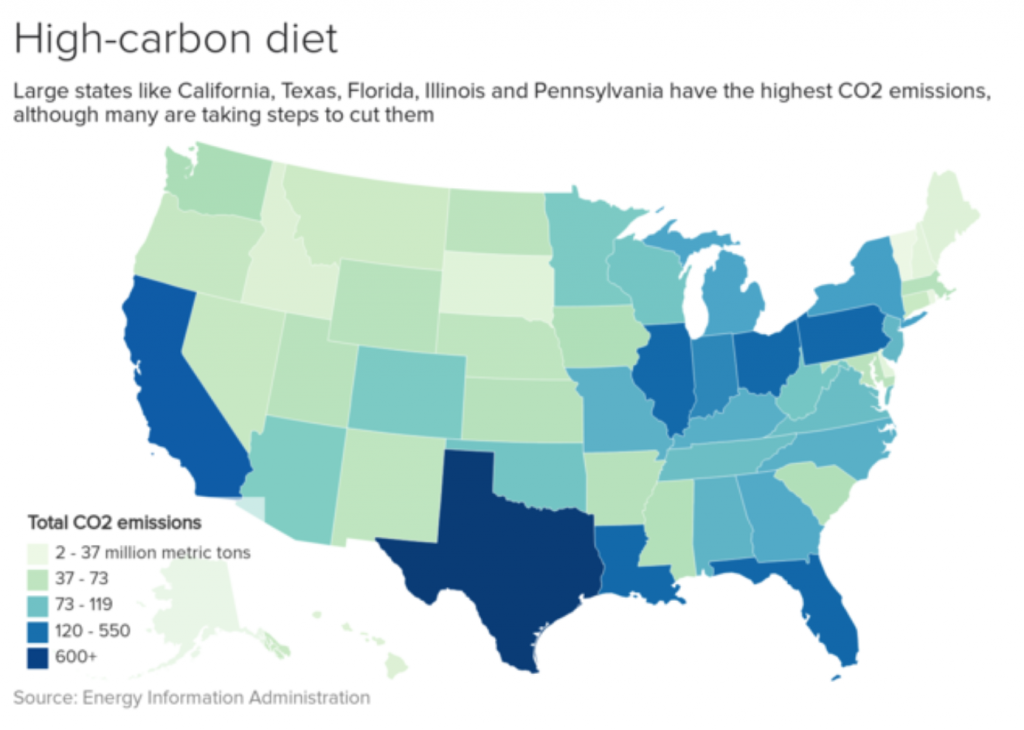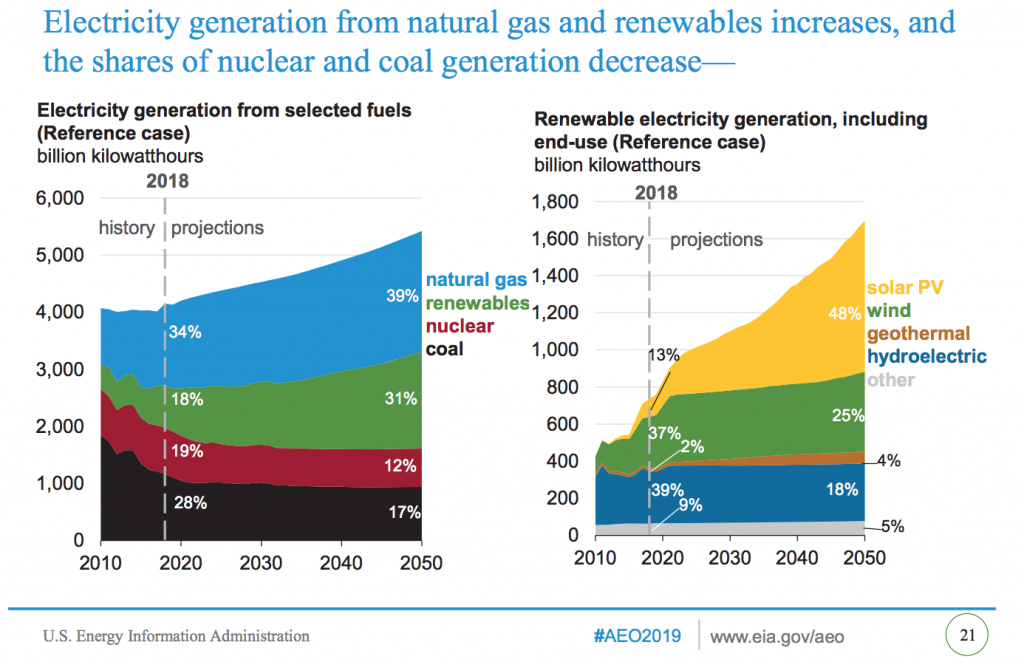In 2018, U.S. electricity generation facilities generated about 4.18 trillion kWh of electricity. Only about 17% of this was from renewable energy sources such as solar, wind, hydroelectric and geothermal. An estimated 30 billion additional kWh of electricity was generated by small-scale solar photovoltaic systems (like those found on building roofs).
While wind and solar get the most attention, the largest percentage of renewable energy is actually hydropower. Solar brings in under 2% of the nation’s energy.
The production of carbon and the use of renewable energy sources is not distributed evenly throughout the United States. Texas, for example, is the largest producer and consumer of electricity. It provides one-fourth of the nation’s wind power. Three other states account for another one-fourth of wind power generated in the U.S.: Kansas, Iowa, Oklahoma.

The good news is the overall percentage of electricity generated from renewables has doubled in the last 10 years, from about 8.5% in 2007 to 17% in 2017.
Several states already are well on their way to 50% renewable energy, with Oregon and Washington leading the way with over 40% of their consumption provided by renewable energy. South Dakota, Maine and Idaho are over 30% and Iowa and Vermont are over 25%.
The EIA projects that more states will continue to move toward renewable energy, with 31% of total energy coming from renewable sources by 2050.

While the current administration is rolling back environmental regulations, future federal and state legislation could increase those numbers. Meanwhile individual states are taking independent action.
Six states and two jurisdictions have set goals to be 100% renewable or carbon-free by 2050 or before: New York, Washington, Hawaii, California, Nevada, New Mexico, Maine, Puerto Rico and Washington D.C. Colorado’s governor has set a goal of 2040, and the state’s largest energy provider is on board for 2050.
Washington state has committed to making the state’s electricity supply carbon neutral by 2030 and 100 percent carbon-free by 2045. The state is the top producer of hydroelectric power in the country; two-thirds of all of the state’s electricity comes from hydro.
Other states which have traditionally relied more heavily on coal have a tougher road ahead. Pennsylvania is the fourth-largest emitter of greenhouse gases in the country but has in recent years, put efforts into switching from coal to natural gas. The state’s governor has said he wants to see an 80-percent reduction in emissions by 2050, and Republican legislators have called for 100% renewable energy by 2050.
New Mexico has enacted a law requiring 50 percent of the electricity provided by the state’s utilities to be generated by renewable sources by 2030, 80 percent by 2040, and 100 percent by 2050.
In addition, 24 states have come together to form the The U.S. Climate Alliance to work to meet the goals of the Paris climate agreement, to reduce greenhouse gas emissions by at least 26% below 2005 levels by 2025.
So while there is still a long way to go, there is clearly momentum driving at least half the states in the nation to reduce their carbon emissions and dramatically increase their use of renewable energy. We will see what the next 10, 20 and 30 years bring!
